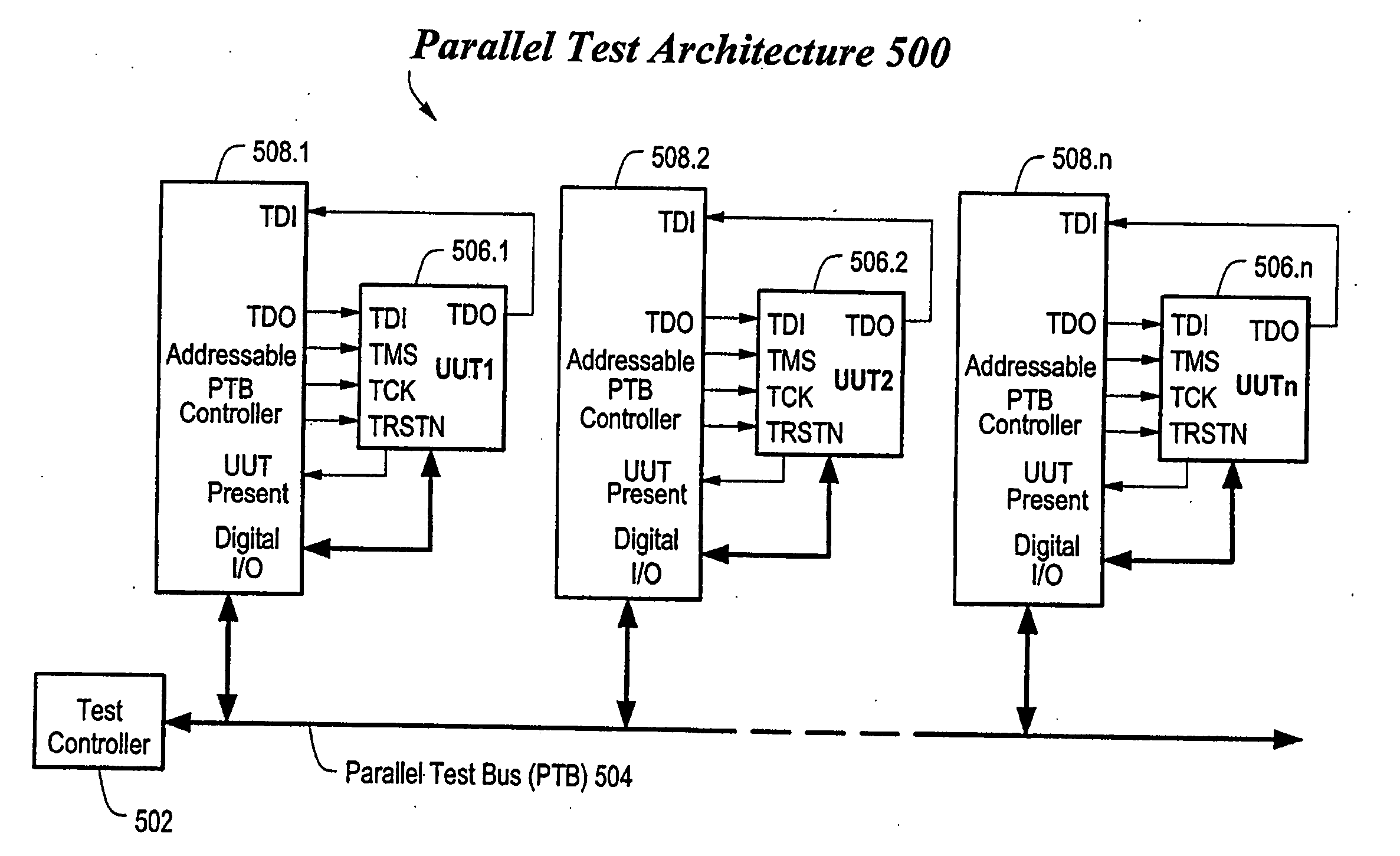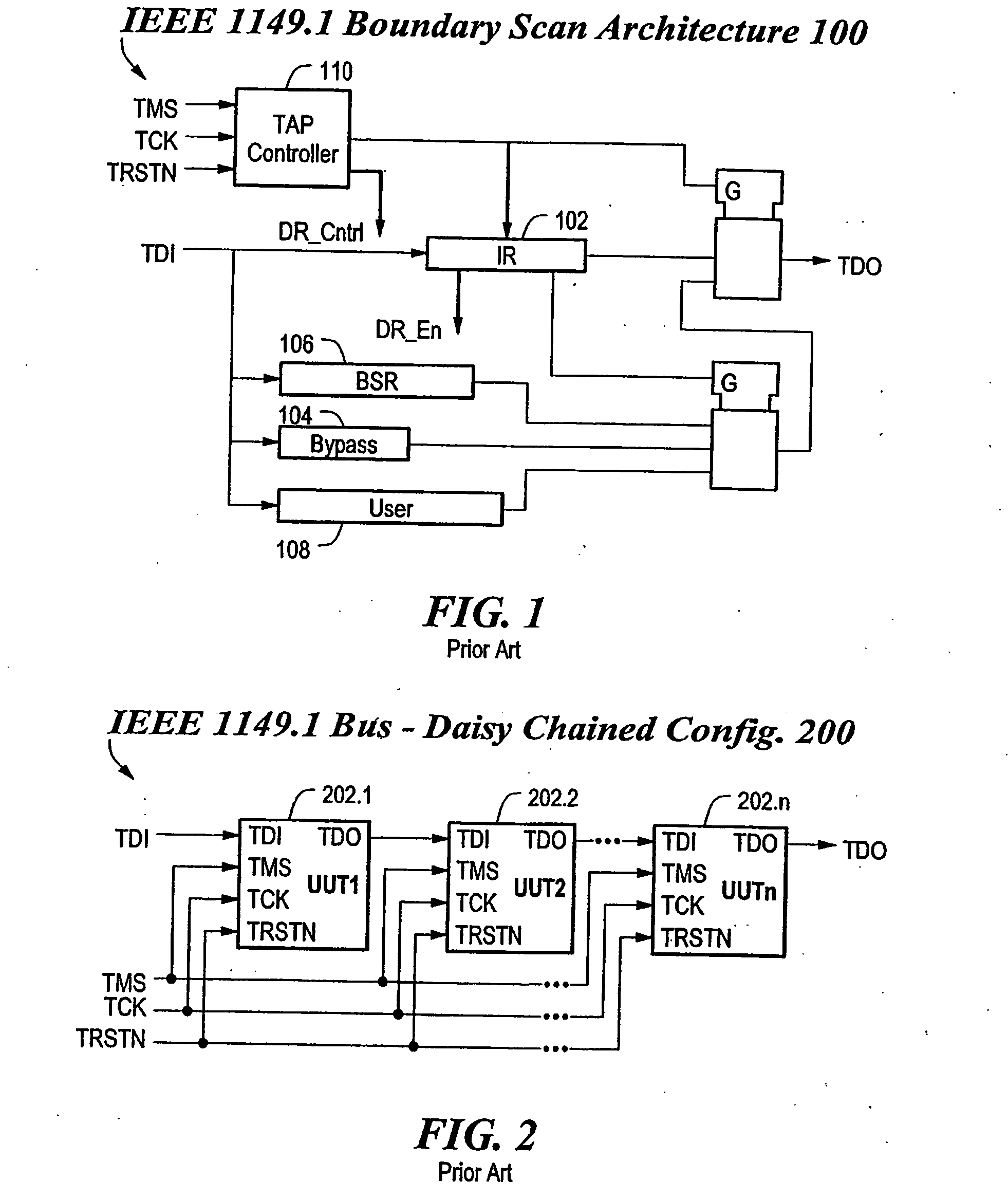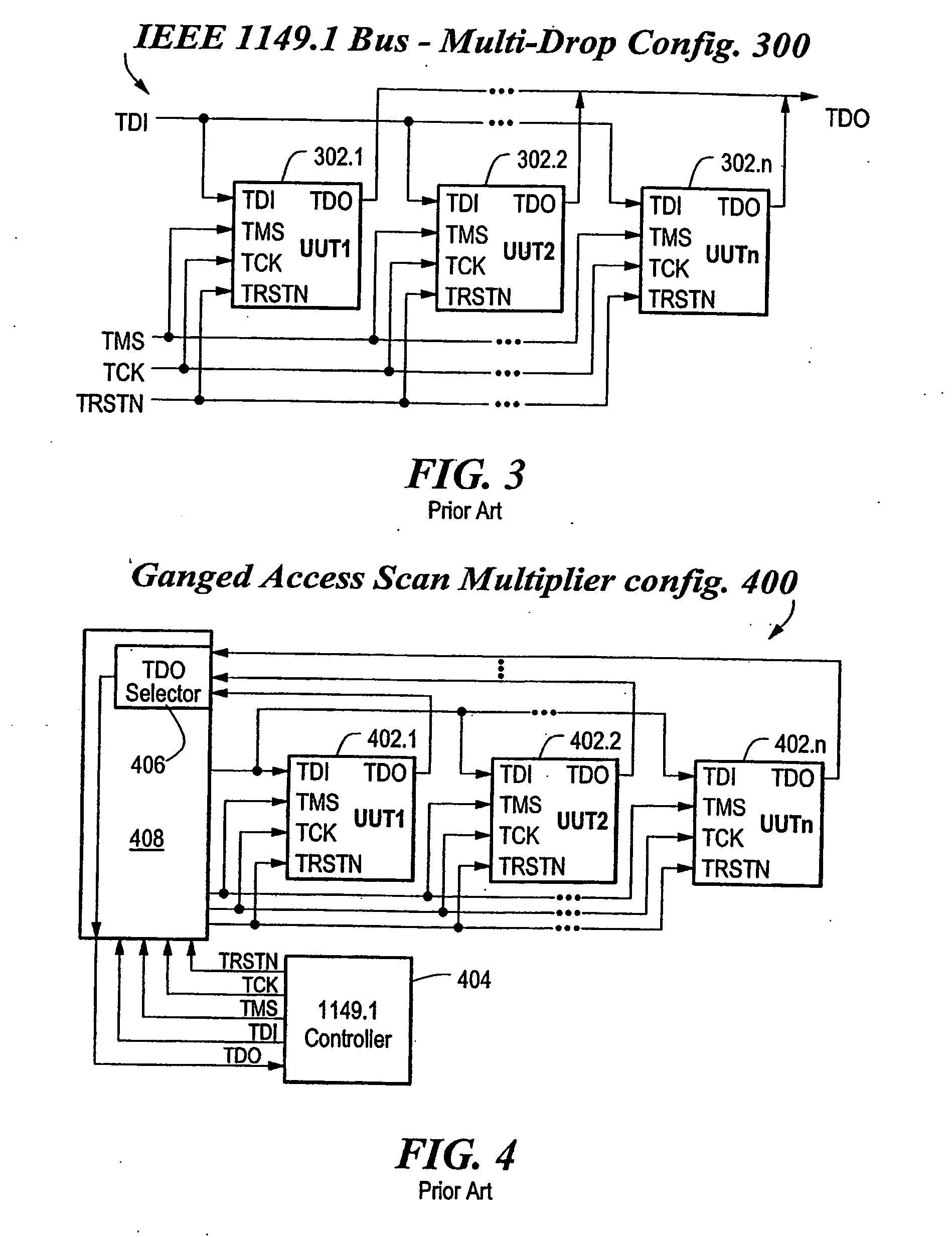Method and apparatus for optimized parallel testing and access of electronic circuits
a technology of parallel testing and access, applied in the field of scan-based testing of integrated circuits, printed circuit boards, systems, etc., can solve the problems of limited ate testing to a single uut, and the scalability of traditional ate is often impractical
- Summary
- Abstract
- Description
- Claims
- Application Information
AI Technical Summary
Benefits of technology
Problems solved by technology
Method used
Image
Examples
Embodiment Construction
[0050] U.S. patent application Ser. No. 10 / 119,060 filed Apr. 9, 2002 entitled METHOD AND APPARATUS FOR OPTIMIZED PARALLEL TESTING AND ACCESS OF ELECTRONIC CIRCUITS, and U.S. Provisional Patent Application No. 60 / 303,052 filed Jul. 5, 2001 entitled METHOD AND APPARATUS FOR OPTIMIZED PARALLEL TESTING AND ACCESS OF ELECTRONIC CIRCUITS, are incorporated herein by reference.
[0051]FIG. 5 depicts an illustrative embodiment of a Parallel Test Architecture (PTA) 500, in accordance with the present invention. In the illustrated embodiment, a test controller 502 is connected to a Parallel Test Bus (PTB) 504. For example, the test controller 502 may be either a separate external test controller or an embedded master controller, e.g., embedded with the system including Units Under Test (UUTs) 506.1-506.n. The test controller 502 is configured to communicate over the PTB 504 using the protocol of the PTA 500, which is described below. In this illustrated embodiment, the UUTs 506.1-506.n are con...
PUM
 Login to View More
Login to View More Abstract
Description
Claims
Application Information
 Login to View More
Login to View More - R&D
- Intellectual Property
- Life Sciences
- Materials
- Tech Scout
- Unparalleled Data Quality
- Higher Quality Content
- 60% Fewer Hallucinations
Browse by: Latest US Patents, China's latest patents, Technical Efficacy Thesaurus, Application Domain, Technology Topic, Popular Technical Reports.
© 2025 PatSnap. All rights reserved.Legal|Privacy policy|Modern Slavery Act Transparency Statement|Sitemap|About US| Contact US: help@patsnap.com



